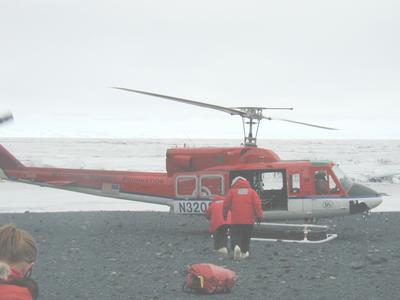
|
|
8 December, 2001
Today, part of the team went to do some terrestrial sampling and some of us did more water and sediment sampling. I thought it would be a good idea to explain in more detail exactly what we do with all this water and sediments we are collecting.
The sediment samples are tested for E coli and toxcity. As I have said before, the presence and the amount of E coli found is used as an indicator for human contamination. David of Goodman Middle School in Washington State, correctly asked: "If all mammals have E Coli in their wastes, why are we using this as an indicator for humans"? The answer quite simply is that if there is E coli contamination, the most likely source is humans. Especially if it seems localized or higher in certain areas. The mammals that are native to Antarctica, would not eliminate enough to make a difference and it would not be found more in some areas than in others.
Another test that is done on the sediment samples is a toxcity test. A system called microtox uses bacteria that have been treated so they can be detected by light.
When the bacteria is mixed with the sample, the toxcity is measured by how many of the bacteria survive. The more bacteria that remain alive after introducing the sample, the less toxic is the sample. Microtox includes a machine in which to place the test tubes with the solutions and a computer program to run the experiment and collect the data.
More on water samples later!

Sally Morehead getting ready to filter some samples.

Kristi Jones at the microtox

Question of the day: In my 12/6 journal I talked about going on a helicopter ride to a remote site collect terrestrial samples. The question was, "If our project is to sample the environment in and around McMurdo station, why are we going to remote sites to take samples?" I haven't gotten any responses. Email those educated guesses!!!

Today's Temps at McMurdo: +3 C, +37 F With wind chill: +1 C, +33 F
Contact the TEA in the field at
.
If you cannot connect through your browser, copy the
TEA's e-mail address in the "To:" line of
your favorite e-mail package.
|
